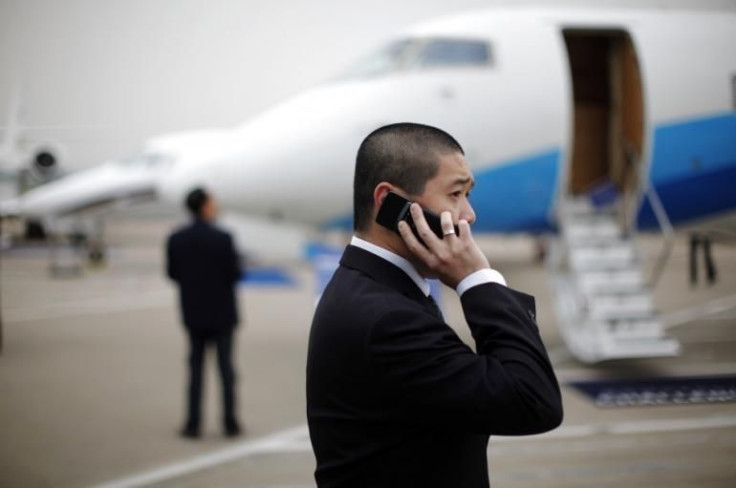FAA Panel Recommends Easing Electronic Device Rules On Flights: Here’s What Happens Next

Fliers are one step closer to using their smartphones, tablets, e-readers and other personal electronic devises for the duration of a flight after industry experts delivered their long-awaited recommendations on the hot-button issue to the Federal Aviation Administration Monday.
A 28-member advisory committee composed of pilots, flight attendants, airline executives, mechanics, engineers and electronics makers suggested -- after nearly a year of deliberation and research -- that the FAA change its current rules to allow the use of many (but not all) activities on personal electronic devises from gate to gate.
“The FAA received the report and recommendations today on the expanded use of personal electronic devises,” the agency said in a statement Monday. “The administrator will review the report and determine the next steps.”
The proposed changes would mean that anyone using an e-reader book, watching a film on a tablet or listening to music on a smartphone would now be allowed to continue these activities uninterrupted from takeoff to landing, according to a source familiar with the matter. Sending and receiving text messages and emails, playing interactive online games or using Wi-Fi would still be prohibited under the recommendations, as would making phone calls. Passengers would also need to stow away laptops or DVD players for takeoff and landing so they don’t pose a physical hazard.
“You can continue watching the last episode of 'Breaking Bad' if you’ve already downloaded it, or you can finish writing the last chapter of your novel or edit your Power Point presentation,” said Henry H. Harteveldt, travel industry analyst at Hudson Crossing, LLC. “It’s good for business productivity, but what you will not be able to do is use the Internet. So from the standpoint of the passenger, it’s a partial victory.”
Harteveldt estimated that the changes would give travelers anywhere from 15 to 25 minutes of additional time with their favorite devices during the departure phase of the flight, and another 10 to 20 minutes on the descent and landing, making it very popular with business travelers and the younger demographic alike. He said there is absolutely no desire to change the ruling on voice calls, which are restricted by the Federal Communications Commission, while the use of Internet below 10,000 feet is covered by a separate FAA regulation that was never part of the current review.
The FAA has yet to release any official details on the report. What the ultimate set of rules will look like and when they will go into effect remain up to FAA Administrator Michael Huerta, who has said not to count on powering up your tablets and e-readers right away.
“There are two ways the panel could make its recommendation to the FAA,” Harteveldt said. “For one, they could recommend a certain date for all airlines to make changes. The other is to have the FAA do this on an airline-by-airline basis, which could give airlines that are faster to get their policies in place a short-term advantage in the market. Their travelers would be allowed to use their devices [during takeoff and landing], while others would still have to put them away.”
Either way, Harteveldt said not to expect any changes until early 2014 or even later, pending a lengthy government shutdown.
Fliers have long chafed under rules that require portable electronics to be turned off for takeoff and landing, largely because the FAA has failed to convince passengers that they pose a threat.
A survey released in May by the Airline Passenger Experience Association and the Consumer Electronics Association found that up to 30 percent of passengers accidentally leave their personal electronic devices on from gate to gate. So for a policy that depends on the honor system, and one that is quite often ignored, why hasn’t a plane fallen out of the sky by now due to the use of an electronic device? That’s the question many advocates have been asking for years.
Former FCC Chairman Julius Genachowski sent a letter to the FAA in December urging the agency to allow greater use of electronic devises during all phases of the flight. “They empower people to stay informed and connected with friends and family, and they enable both large and small businesses to be more productive and efficient, helping drive economic growth and boost U.S. competitiveness,” he argued.
The FAA had long claimed there were just too many unknowns about the radio signals electronics give off to allow them below 10,000 feet, even though newer planes made by Boeing Co., Airbus, Embraer SA and Bombardier Inc. are all designed to resist electronic interference. Because the pilot and cockpit crew need to focus on critical arrival and departure tasks, the agency argued that any use at lower altitudes could interfere and become a safety hazard, particularly on the older planes.
The last major review of gadgets on aircraft took place in 2006, before tablets, e-readers and most smartphones existed. At that time, the FAA found that there was “no evidence saying these devices can’t interfere with a plane, and there was no evidence saying they can.”
Many who have opined on the matter over the past seven years hoped for more conclusive results this time around. A simple yes or no on the interference question may be asking for too much, but change, it seems, is finally in the air.
© Copyright IBTimes 2024. All rights reserved.












